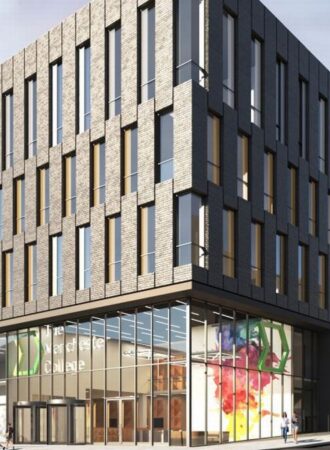The pretty gruesome history of the ‘shambles’ dates back as early as The Middle Ages. The word refers to the wooden bench used for the sale of meat of which were a common sight on the streets that were lined with overhanging timber-framed buildings.
With the bloody market stall scenes and considerable lack of hygiene back then, it isn’t surprising that ‘shambles’ became a byword for disorder, confusion and mess by the 19th century.
Shambles Square near the Corn Exchange contains two of Manchester’s oldest standing buildings, The Old Wellington and Sinclairs Oyster Bar.

The Old Wellington existed originally as an optician, fishing tackle shop and was even the birthplace of the famous Manchester Poet John Byrom. Heard of him? Me neither, but he’s pretty famous for inventing Universal English Shorthand, something I think my nan used as a receptionist back in the day.
Jump to 1900s and the buildings were still standing in all their black and white glory. That is however until, Manchester, the industrial hub of the North, became a target for German bombers throughout WWII.
In 1941, 2 nights of mass raids imprinted on the city. 272 tonnes of high explosive bombs were dropped on the first night and 195 the following evening. This made the area the 11th most raided area in Britain.


600 fires followed due to almost 2000 incendiary bombs, causing one of the biggest blazes in England since the Great Fire of London 1666. Victoria Street, Miller Street and The Shambles became a mass of smoking ruins. This page of Northern history is now coined the ‘Christmas Blitz’, 684 people lost their lives and more than 2000 people injured.
The destroyed area was redeveloped in the 1970s, hoisting up The Old Wellington Inn and Sinclair Oyster Bar on massive steel and concrete stilts to create a new square behind the old M&S.

Credit: Historic England
However, it wasn’t happily ever after for The Shambles. In 1996, the buildings survived the 3000 pound IRA bomb that tore through Corporation Street, protected by the Arndale developments and masses of concrete buildings and the buildings new concrete stilts.
In order to preserve them from further damage, the buildings were lifted 15 feet and moved several hundred to the newly created Shambles Square as we know it now.
The city redeveloped itself and to make way for the new M&S site, The Old Wellington and Sinclairs Oyster Bar were dismantled into more than 10,000 separate parts. Each piece meticulously labelled, recorded and photographed to enable the reassembling of the buildings back to their original grandeur.

After really long negotiations which the church, who weren’t all that happy about 2 pubs on consecrated land, the development saw the buildings moved 300m north of their existing location into the new site adjacent to Manchester Cathedral.
Fun Fact; To keep traditional Tudor aesthetics, you even can’t use your phone in Sinclairs as they attempt to boycott antisocial customers. Even still, it’s one of the busiest beer gardens in town as soon as the sun is out.
Get yourself down for pub grub and a pint and soak up all that history in one of Manchester’s oldest pubs.
Pictures courtesy of Manchester City Council Library Archives.
Shambles Square, Cateaton Street, Manchester, M3 1SQ


